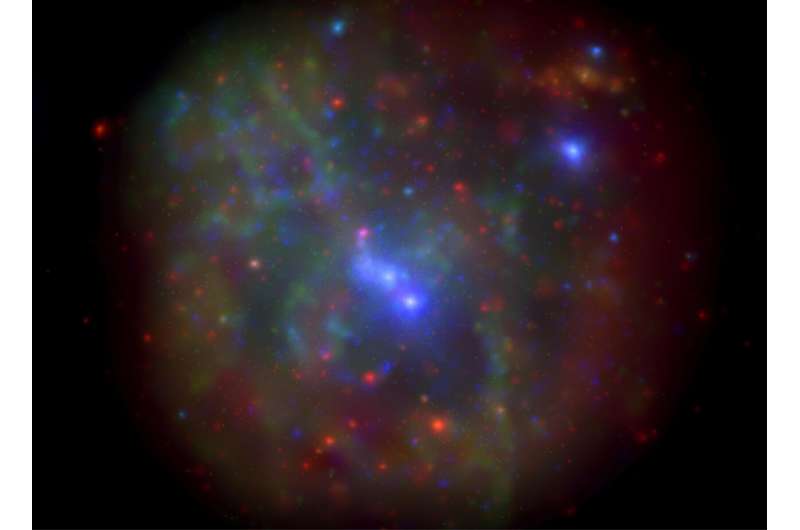Black hole at center of Milky Way unpredictable and chaotic

An international team of researchers, led by postgraduate student Alexis Andrés, has found that the black hole at the center of our galaxy, Sagittarius A*, not only flares irregularly from day to day but also in the long term. The team analyzed 15 years’ worth of data to come to this conclusion. The research was initiated by Andres in 2019 when he was a summer student at the University of Amsterdam. In the years that followed, he continued his research, which is now to be published in Monthly Notices of the Royal Astronomical Society.
Sagittarius A* is a strong source of radio, X-rays and gamma rays (visible light is blocked by intervening gas and dust). Astronomers have known for decades that Sagittarius A* flashes every day, emitting bursts of radiation that are ten to a hundred times brighter than normal signals observed from the black hole.
To find out more about these mysterious flares, the team of astronomers, led by Andrés, searched for patterns in 15 years of data made available by NASA’s Neil Gehrels Swift Observatory, an Earth-orbiting satellite dedicated to the detection of gamma-ray bursts. The Swift Observatory has been observing gamma rays from black hole since 2006. Analysis of the data showed high levels of activity from 2006 to 2008, with a sharp decline in activity for the next four years. After 2012, the frequency of flares increased again—the researchers had a difficult time distinguishing a pattern.
In the next few years, the team of astronomers expect to gather enough data to be able to rule out whether the variations in the flares from Sagittarius A* are due to passing gaseous clouds or stars, or whether something else can explain the irregular activity observed from our galaxy’s central black hole.
“The long dataset of the Swift observatory did not just happen by accident,” says co-author and previous supervisor to Andrés, Dr. Nathalie Degenaar, also at the University of Amsterdam. Her request for these specific measurements from the Swift satellite was granted while she was a Ph.D. student. “Since then, I’ve been applying for more observing time regularly. It’s a very special observing program that allows us to conduct a lot of research.”
Co-author Dr. Jakob van den Eijnden, of the University of Oxford, comments on the team’s findings: “How the flares occur exactly remains unclear. It was previously thought that more flares follow after gaseous clouds or stars pass by the black hole, but there is no evidence for that yet. And we cannot yet confirm the hypothesis that the magnetic properties of the surrounding gas play a role either.”
Black hole in the center of the Milky Way unpredictable in the long term
A Andrés et al, A Swift study of long-term changes in the X-ray flaring properties of Sagittarius A*, Monthly Notices of the Royal Astronomical Society (2021). DOI: 10.1093/mnras/stab3407
Citation:
Black hole at center of Milky Way unpredictable and chaotic (2022, January 12)
retrieved 12 January 2022
from https://phys.org/news/2022-01-black-hole-center-milky-unpredictable.html
This document is subject to copyright. Apart from any fair dealing for the purpose of private study or research, no
part may be reproduced without the written permission. The content is provided for information purposes only.
For all the latest Science News Click Here
For the latest news and updates, follow us on Google News.

